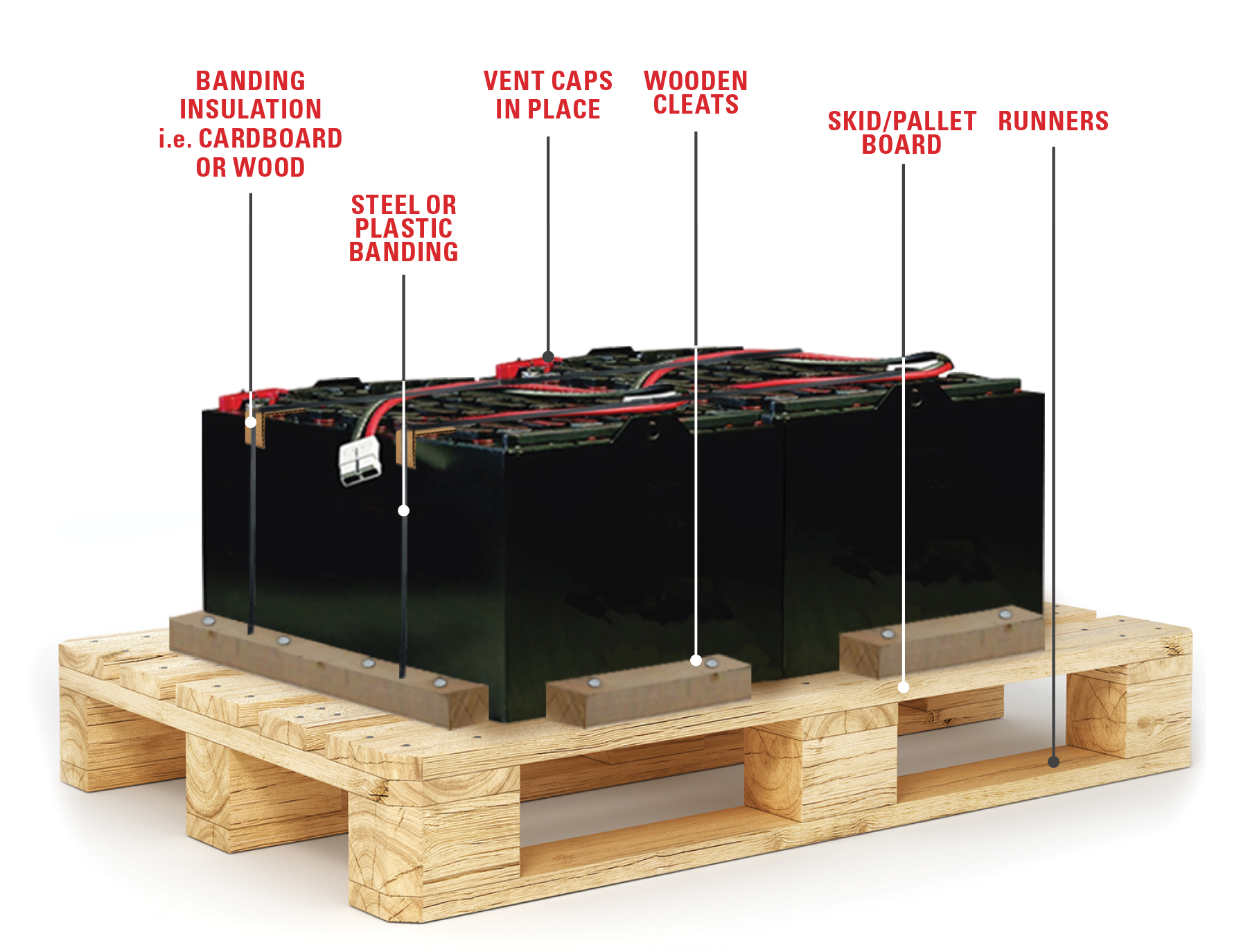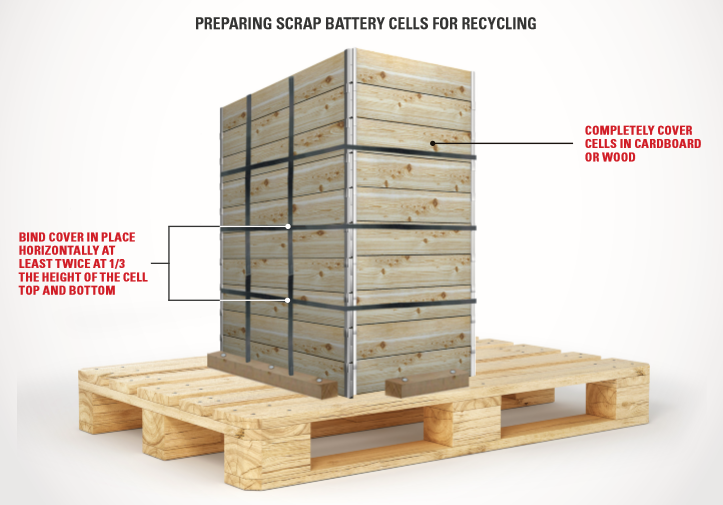PREPARING FORKLIFT BATTERIES AND BATTERY CELLS FOR RECYCLING PICKPUP
HOW TO PREP INDUSTRIAL OR AUTOMOTIVE LEAD ACID BATTERIES FOR RECYCLING PICK-UP*
1. ALWAYS WEAR PERSONAL PROTECTIVE EQUIPMENT (PPE) WHEN HANDLING LEAD ACID BATTERIES
- Safety boots, glasses, rubber gloves and rubber apron
2. INSPECT BATTERY FOR CRACKS AND MISSING CAPS TO AVOID SPILLS DURING TRANSPORTATION
- Ensure batteries are free from leaks and that all cell vent caps are in place
3. SELECT AN APPROPRIATE SKID
- If possible, reuse a skid from a new battery shipment
- Otherwise be sure to select a sturdy skid with at least three bottom runners and no broken or missing boards
- Skid board height should be at least 5/8”
- Maximum skid sizes are 44” x 48” or 40” x 48”
- Be sure there are no nails in the skid that could puncture the battery
4. PLACE BATTERY UPRIGHT ON SKID
- Batteries need to be positioned upright across the runners of the skid
- NEVER place a battery on its side or upside-down
- Multiple smaller batteries can be banded together on a standard skid to consolidate a shipment
5. SECURE BATTERY TO THE SKID WITH BANDING AND WOOD CLEATS TO PREVENT SLIDING DURING TRANSPORTATION. A. BANDING
- Use steel or plastic banding that is a minimum of 5/8” wide and affix it on the battery in the same direction as the runners on the skid
- To avoid shorting, use wood or cardboard to insulate steel banding
- Place steel banding insulation across the top of the battery to prevent steel banding from coming into contact with the battery posts or terminals
- Reinforce the banding on the top edges of the battery with cardboard
B. WOOD CLEATS
- Nail adequate wood cleats around the four sides of the battery
* The shipment of industrial batteries is covered by the Transportation of Dangerous Goods (TDG) Act and Regulations. The purpose of the TDG Act and Regulations is to promote public safety when dangerous goods are being handled, offered for transport or transported by road, rail, air, or water (marine). Anyone who handles (ships, transports, and receives) dangerous goods by road, rail, air, or water (marine) must comply with the TDG Regulations. Always check the TDG Act and Regulations to ensure compliance.
HOW TO PREP INDUSTRIAL LEAD ACID BATTERY CELLS FOR RECYCLING PICK-UP*
FOLLOW THE SAME INSTRUCTIONS FOR LEAD ACID BATTERIES AND THE ADDITIONAL REQUIREMENTS DETAILED BELOW:
- Damaged or cracked cells must be free of electrolyte
- Completely cover the cell(s) in cardboard or wood
- Bind cell cover in place horizontally at least twice approximately 1/3 the height of the cell top and bottom
* The shipment of industrial batteries is covered by the Transportation of Dangerous Goods (TDG) Act and Regulations. The purpose of the TDG Act and Regulations is to promote public safety when dangerous goods are being handled, offered for transport or transported by road, rail, air, or water (marine). Anyone who handles (ships, transports, and receives) dangerous goods by road, rail, air, or water (marine) must comply with the TDG Regulations. Always check the TDG Act and Regulations to ensure compliance.
Scrap Battery Pick-up Request
Complete the information requested on this form to ensure a seamless scrap battery pick up.




